Thoughtful Branding for Impactful Designs
Why a Great Brand is Necessary for a Great Web Design
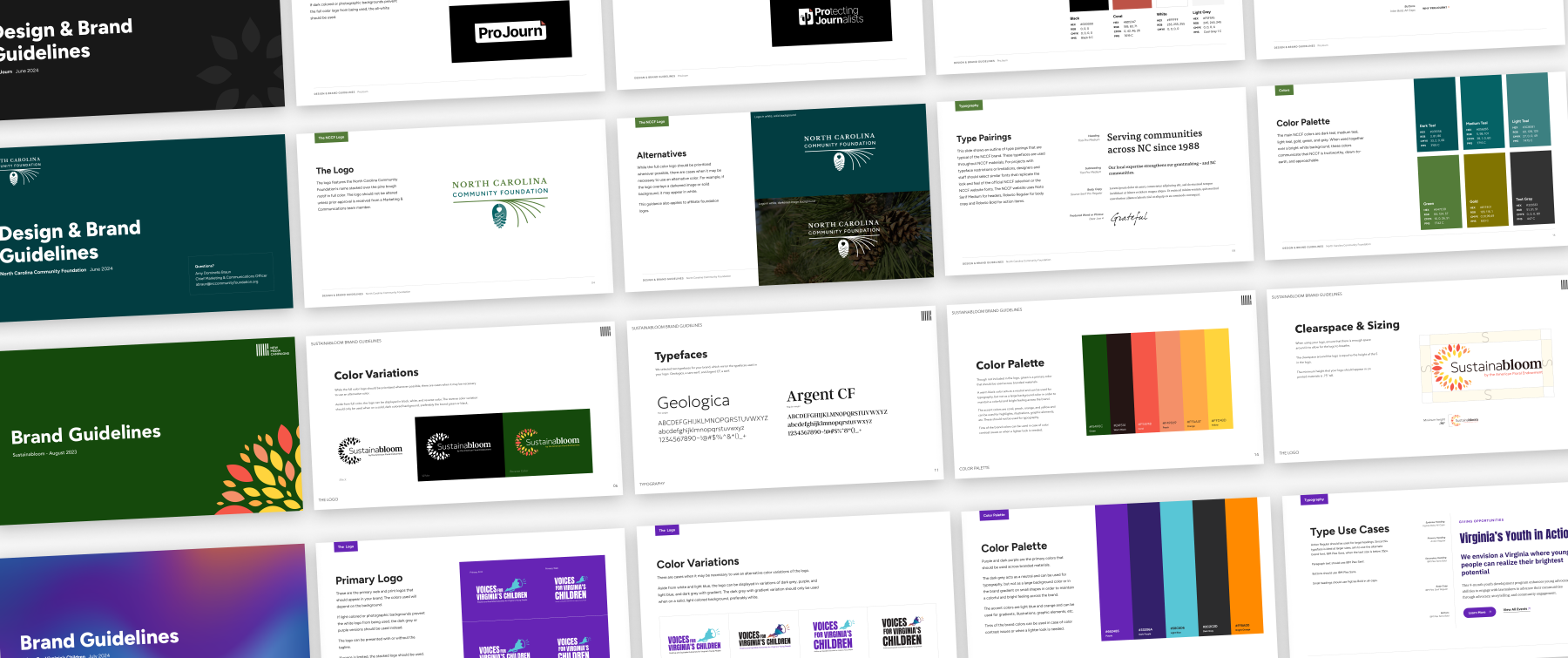
There’s a common misconception that building a great website means meticulously refining content and gathering data about conversion rates or sales. While that type of preparation is undeniably valuable, comprehensive brand strategy is a foundational – and often overlooked – piece that plays an important role in a website’s longevity and success.
An underdeveloped brand may give your designer an idea of your business or organization's character and aesthetic, while a thoughtfully curated brand serves as the complete playbook for executing a cohesive creative vision and telling a story that resonates with target audiences.
Create a Foundation For Your Website Designer
An established brand strategy, typically compiled into a brand guidelines document, includes a strategic logo design, a palette of primary and secondary colors, typography pairings, and messaging guidelines. Clear and specific brand guidelines ensure that any reader – whether your website designer or another partner – can quickly understand your brand vision and how it relates to business goals.
With the foundation set, a designer can easily see the big picture of your brand and develop designs that align with the larger style and narrative. And without the need to backtrack to solidify brand elements, your designer can spend more time carrying the brand through every detail of the site, creating unique layouts, and developing interactive elements. Brand guidelines remove the guesswork and streamline the process of producing a well-considered design that engages users and makes a positive first impression.
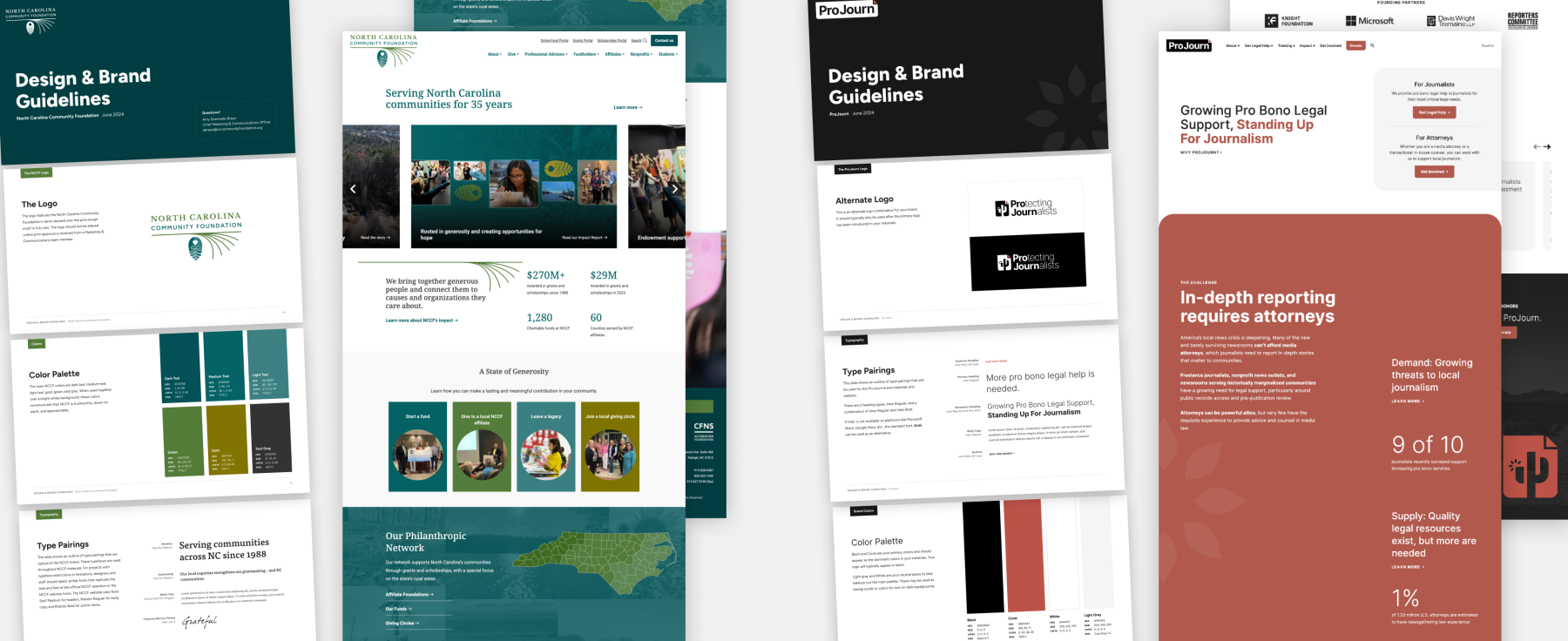
Tell Your Story and Connect With Your Audience
In addition to smoothing the process for your website designer, a strong brand strategy enhances your organization’s online storytelling. Users get to know your professional personality and values through branding – think about how colors and graphic styles have unique connotations – so conveying the right qualities online is crucial for telling a compelling story about who you are, what you do, and why the work matters. A website with clear branding creates a memorable experience for users and encourages them to engage with your site by reading resources, exploring services or products, or taking a next step like filling out a contact form.
Consistency is also essential, especially when it comes to translating your brand across multiple platforms. Keeping your messaging and visual identity the same across the website, marketing collateral, and social media is key because it allows users to identify your organization quickly and easily. You can maintain brand consistency by consulting your brand guidelines every time you select a color, font, or logo variant.
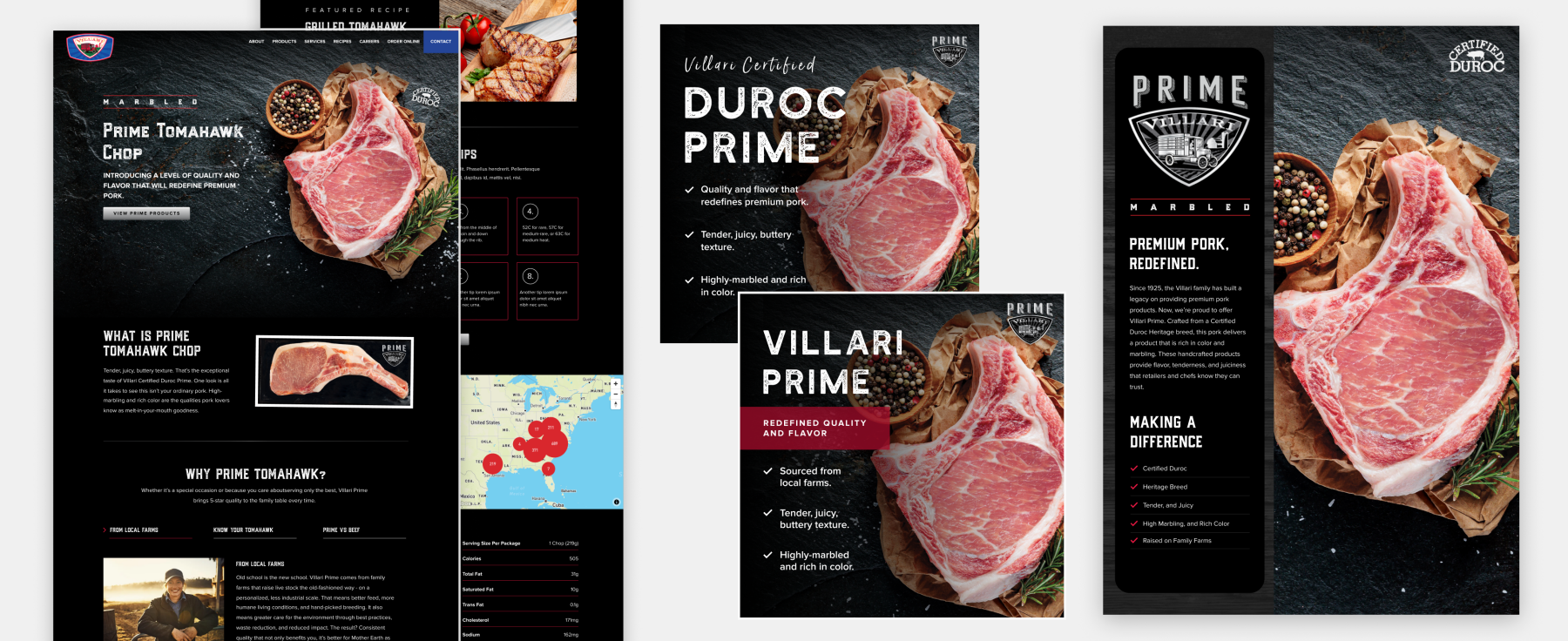
In Practice: Voices for Virginia’s Children
We recently partnered with Voices for Virginia's Children on a full overhaul that included a rebrand and website design. We started with the brand, which needed to balance youthful qualities without coming across as overly playful. From the choice of typography and colors to the logo and design accents, we worked closely with the Voices team to make sure that each piece would resonate with multiple target audiences while projecting the organization’s authority and impact. The branding process culminated in a detailed brand guide that outlined logo usage, typography options, design accents, and a 5-shade color palette.
With the brand established upfront, we were able to move through the website designs efficiently. We incorporated the brand’s logo mark and bright gradients into mastheads and backgrounds, and devoted extra attention to designing features like a custom bill tracker. The brand guidelines streamlined the website process by reducing in-the-moment decision-making and holding our designers accountable to pre-determined visual standards.
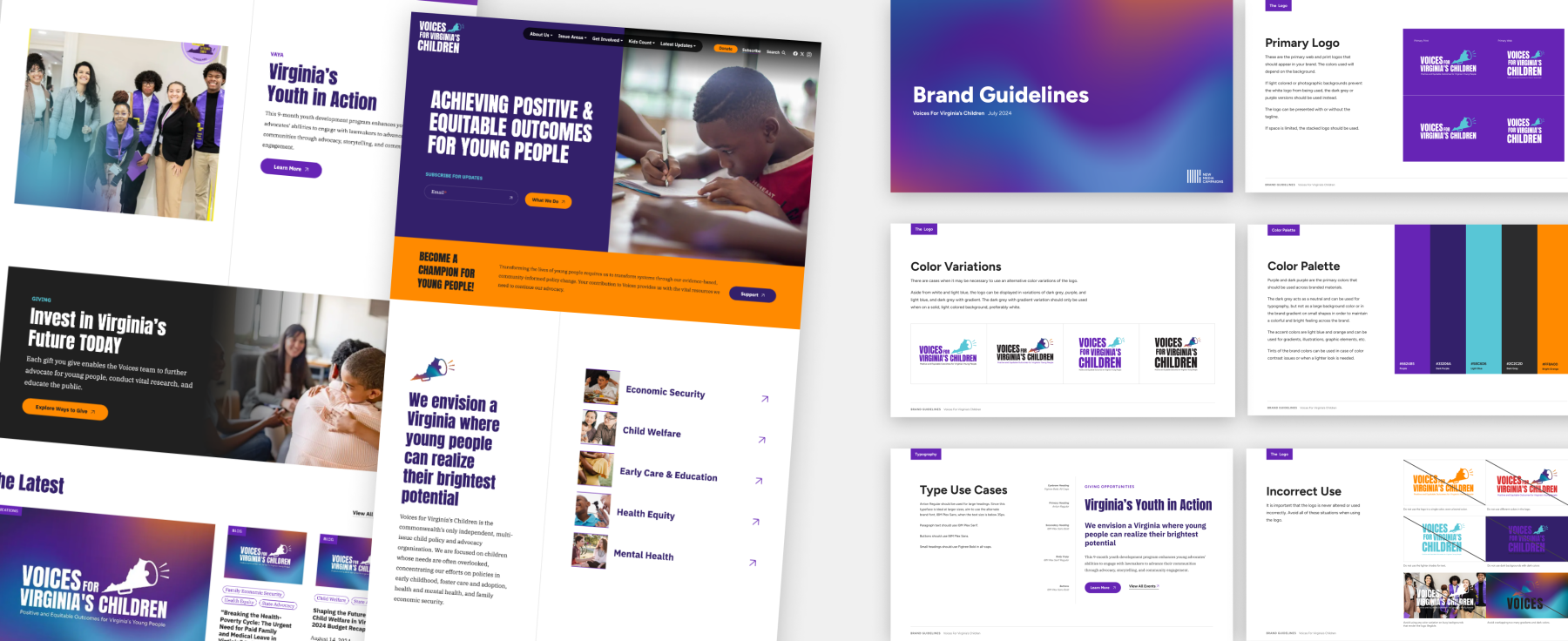
In Practice: International Women's Media Foundation (IWMF)
For special initiatives or events, some organizations develop moodboards or new guidelines that exist alongside the primary brand. Providing the complete creative vision at the start makes it possible to move quickly and confidently through the design of the webpage and any marketing collateral.
That was the case for our longtime client IWMF, a global organization built to serve the holistic needs of women and nonbinary journalists. Each year, IWMF publishes a web-based annual report to showcase their work, global impact, and new initiatives. For the 2023 Impact Report, they established and shared a visual framework for colors, type, and graphics that allowed us to easily present their content in an impactful and visually pleasing way within their project timeline.
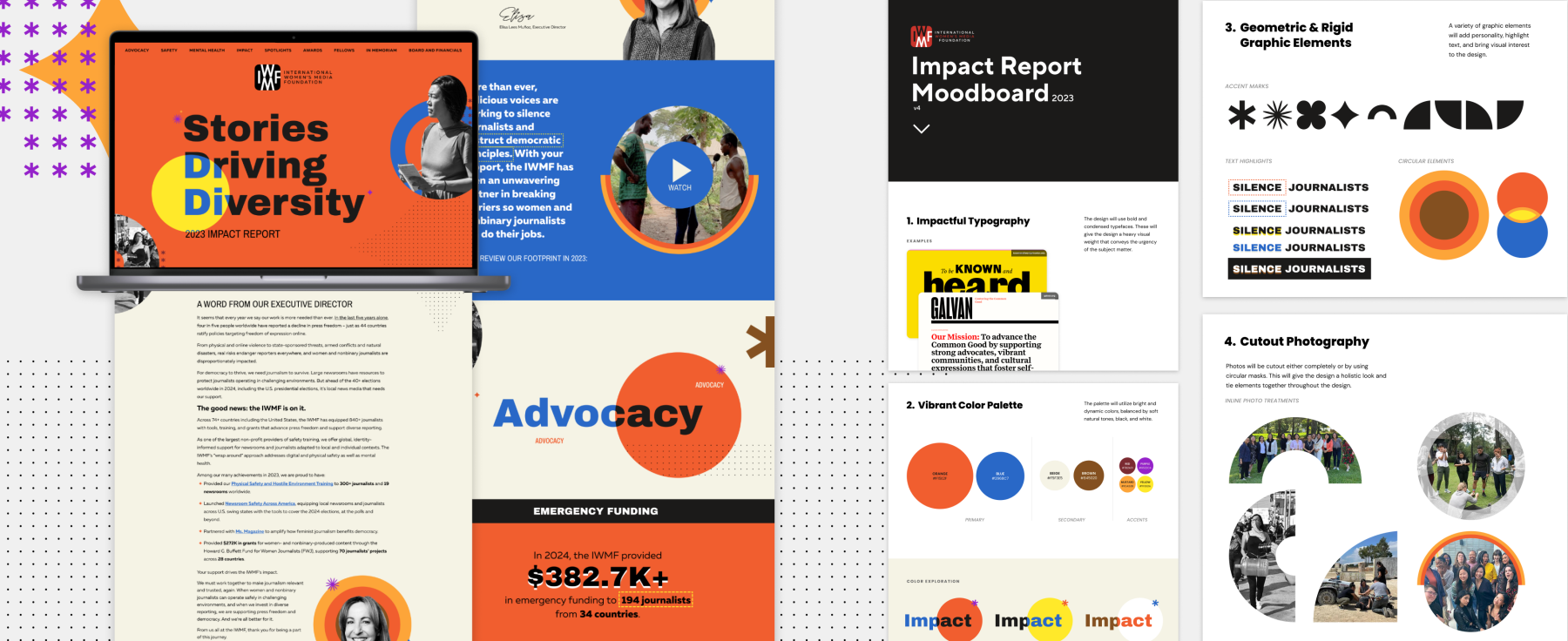
Get Your Brand Ready For a New Website
Before kicking off your web project, make sure to establish brand guidelines that includes these core elements:
- Logo: A successful logo design thoughtfully represents your business or organization and is easily recognizable and legible. For many groups, it can be beneficial to have a primary logo with the full organization name and a secondary logo or mark that can be used in condensed spaces and as a supporting graphic.
- Color Palette: Your palette should include both primary (main) colors for your brand along with secondary supporting colors. As colors are selected, be sure to consider how they should be used and whether they align with the way you’d like to be perceived by target audiences.
- Typography: Limit your choices to 1-2 fonts that match the design of your logo and are easily readable at small and large sizes. These fonts will be used across your website and marketing collateral to establish brand consistency.
- Imagery: While your web partner can guide you on photo and video needs, it can be helpful to build a library of on-brand imagery that accurately represents your organization. The collection may include original or stock photos that reflect your preferred style and subject matter.
As you approach a website project, it’s important to set yourself up for success by spending some extra time refining your brand strategy before getting started. While it can be daunting, the initial commitment will pay off in the long run by paving the way for an efficient process and designs that elevate your organization’s defining qualities and priorities.